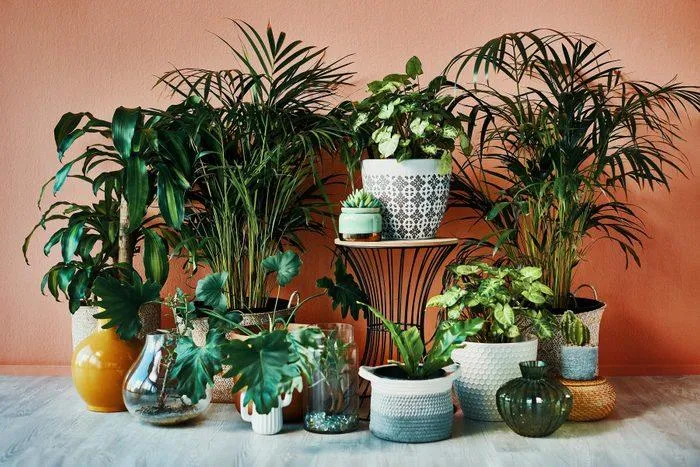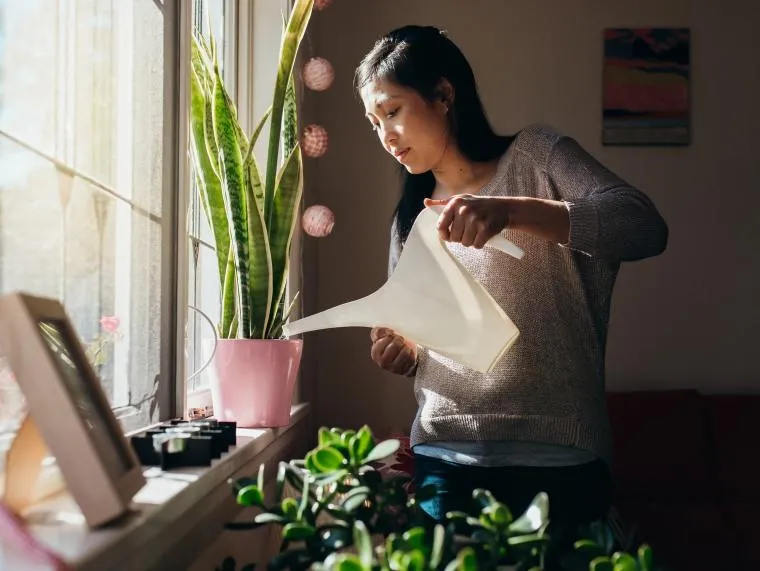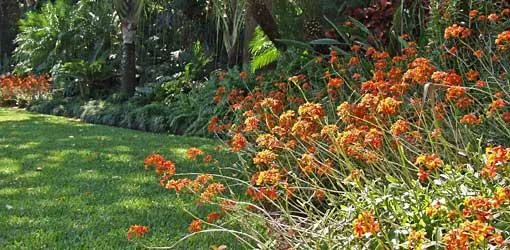A Guide to Growing Tropical Plants
Tropical plants can add bursts of vibrant color and texture to any indoor or outdoor space. However, as their name suggests, they have specific care needs compared to more hardy varieties. In this article, I’ll break down the main types of tropical plants and provide tips for choosing, planting, and caring for them based on my years of experience as an avid gardener. By the end, you’ll have the knowledge to select plants that will thrive in your conditions.
Types of Tropical Plants
There is a vast diversity of tropical flora, but here are some of the most common and easy-to-grow varieties homeowners choose:
- Orchids: With their intricate blooms, orchids are one of the most popular houseplants. Phalaenopsis (moth orchids) are excellent for beginners.
- Philodendrons: With their heart-shaped leaves in various colors and textures, philodendrons are practically indestructible. Try the heartleaf (P. hederaceum) or brasil (P. erubescens) varieties.
- Spider plants: Known for their long trails of grass-like leaves and miniature white flowers, spider plants (Chlorophytum comosum) are extremely versatile and propagate easily from plantlets.
- Monstera: Featuring their iconic fenestrated leaves, monsteras (Monstera deliciosa) have become hugely trendy houseplants. They need a large pot and support to climb.
- Palms: Iconic palms like lady palms (Rhapidophyllum hystrix), parlour palms (Chamaedorea elegans), and bamboo palms (Chrysalidocarpus lutescens) thrive as houseplants with sufficient light.
Choosing Plants That Fit Your Space
When shopping for tropicals, consider your indoor conditions like light levels, temperature, and available space. Plants adapted to lower light like peace lily or Chinese evergreen are better bets for offices or north-facing rooms. Larger varieties requiring higher light need brighter exposures. Check mature plant sizes too—some like monsteras can get huge!
For outdoor areas, tropicals are best suited to USDA zones 9-11 where temperatures stay above freezing. Zone pushers like cannas, bananas, and ginger can work in zone 8 with mulch protection. Assess how much sun your plot receives—many tropicals prefer part shade. Proper placement goes a long way in keeping plants happy.
Soil and Planting Considerations
Most tropical plants thrive in well-draining potting mixes. When planting, check the rootball is not rootbound by gently squeezing the sides of the container. Carefully remove from its nursery pot and loosen any circled or bent roots. Backfill holes with soil, firming gently as you go. Water in thoroughly after planting.

For containers, use a soil-based or bark-based potting mix amended with organic material like compost. Avoid soils staying soggy, as tropical roots are prone to rot. Place a layer of gravel or charcoal in the bottom of pots for additional drainage if needed. Consider elevating pots off surfaces to promote air circulation under saucers.
Light, Temperature, and Watering Tips
Light is the single most important factor for tropical growth—they simply cannot thrive without enough sun. For indoor plants, position in the brightest available spot, usually an east- or west-facing window. Rotate regularly so all sides receive light. Supplement withGrow lights in winter if necessary.
Tropicals generally prefer warm conditions, with daytime temperatures between 70-80°F. Night temperatures should not drop below 60°F. Use a heating pad under pots if indoor areas get too cool. Monitor plants for signs of stress like wilted or yellow leaves and adjust temperatures accordingly.
When it comes to water, the rule of thumb is to water thoroughly until water drains freely from the bottom of containers, then allow the top few inches of soil to dry out before watering again. Feel soil with your fingers to check moisture levels. Mist leaves occasionally to boost humidity around plants.
Fertilizing and Pruning Practices
For container-grown tropicals, apply a diluted liquid fertilizer according to label instructions every 2-4 weeks during the growing season. Slow-release granular varieties also work well for convenience. Be sure not to over-fertilize, which can burn delicate roots. Hold off feeding when plants are not actively growing in winter.

Pruning techniques vary by plant. Most appreciate a light trim to shape and control size. Snip off spent flower stems at the base on bloom-forming plants like orchids to encourage reblooming. Remove leggy growth or prune back trailing plants like spider plants by one-third to promote bushier growth. Sanitize pruning tools between plants to avoid disease spread.
Common Pests and Problems
Unfortunately, tropical plants are also attractive to various insects and pathogens in warm, humid conditions. Keep a close eye out for signs of infestation and address issues promptly to avoid bigger problems down the line. Some potential issues include:
- Spider mites: Recognizable by stippling on leaves. Mist plants regularly and remove affected growth.
- Scale: Appear as hard, stippled bumps on stems. Carefully scrape off with fingernail or cotton ball dipped in rubbing alcohol.
- Mealybugs: Fluffy white masses in leaf joints. Physically remove with cotton swab dipped in alcohol or neem oil.
- Root rot: Overwatered soil leads to mushy, dark roots. Improve drainage and cut away rotted portions with sterile blade.
Tips for Overwintering Tropicals Indoors
One tough part about growing tropicals is providing suitable conditions when natural light levels decrease in fall and winter. Here are some strategies that have helped me successfully keep plants growing through the colder months:
- Gradual acclimate plants to shorter day lengths by moving them to partly shaded spots in Sept.
- Supplement natural light with adjustable grow lights and place plants closer to bulbs for added photons.
- Group pots together strategically to retain humidity and create a microclimate around foliage.
- Check soil frequently as plants metabolize more slowly and do not dry out as fast when colder.
- Consider reducing fertilizer or holding off until spring to avoid nutrient burn over winter.
With some forethought in plant choices and care adjustments seasonally, tropical plants can thrive indoors year-round, basically. I hope these tips help you grow amazing greenery—let me know if you have any other questions!
Information on Selecting Tropical Plants
| Plant | Light Needs | Water Needs | Size | Best Location |
|---|---|---|---|---|
| Philodendron | Low to medium light | Allow soil to dry between waterings | Vining, can climb | Near windows or under bright, indirect light |
| Pothos | Low to bright light | Allow soil to dry between waterings | Vining | Any indoor location with lighting |
| Dracaena | Medium to bright light | Allow soil to dry between waterings | Tall, upright plants | Near a bright window |
| Peperomia | Medium to low light | Allow soil to dry between waterings | Small to medium | Any indoor location with lighting |
| Chinese Evergreen | Medium to low light | Allow soil to partially dry between waterings | Medium to large | Near a bright window for colorful leaves |
FAQ
-
What kinds of plants are considered tropicals?
Tropical plants, or tropicals, refer to plant life that thrive in hot climates. This includes plants like hibiscus, banana trees, bird of paradise, and orchids. Tropicals need warm soil temperatures and plenty of humidity to flourish.

-
Are tropical plants difficult to care for in comparison to other houseplants?
On one hand, tropical plants do require some unique care compared to others. They like warm indoor temperatures between 70 to 80 degrees Fahrenheit. At the same time, as long as you water them regularly and keep the humidity levels up, many tropicals are fairly simple to look after. The key is meeting their temperature and moisture needs.
-
What kinds of places in a home provide the ideal conditions for tropical plants?
Areas like bathrooms tend to be perfect for tropicals. The warm, humid environment from showers basically mimics their natural habitat. Other good spots contain kitchens, conservatories, and sun porches. The higher heat and moisture in those rooms helps tropical plants thrive indoors.
-
How can you increase the humidity for tropical plants if the normal indoor air is too dry?
To up the humidity, you can use pebble trays filled with water under the potted plants. The water evaporates and humidifies the air surrounding the tropicals. Furthermore, you can run a cool mist humidifier nearby. Apparently, that extra moisture makes a big difference for these finicky plants that prefer steamy conditions. Just be sure to monitor and refill liquids as needed.
-
Do tropical plants primarily grow as houseplants or do some species also do well outdoors in warm regions?
While many tropicals stay inside as houseplants, notably quite a few kinds can thrive exterior in zones 9-11. For example, places like Hawaii, Florida, and Southern California offer suitable outdoor environments for plants like guava, passionfruit vine, and hibiscus. Those species take to temperate climates when given the similar hot, damp setting as their natural rainforest homes. Thus some tropicals definitely please outdoors too in the right hot location.
-
Is it possible for the average person to keep exotic tropical plants alive, or do they require special green thumb skills?
You know, a lot of exotic tropicals share similar care to very common houseplants. Maybe to maintain something fancier prefers extra attention and a green thumb. But there are lots of easy tropical options even novice plant parents can definitely achieve satisfying results with. Keeping peace lilies, pothos, and philodendrons pleased is surprisingly effortless. So I’d say absolutely people should not feel intimidated to try – starting small with user-friendly tropicals can allow anyone to become aquatinted with these amazing plants.

